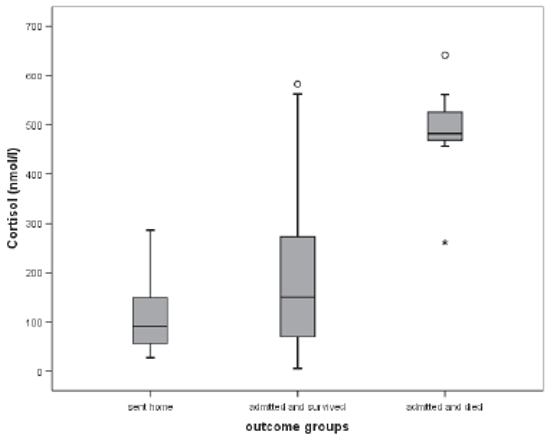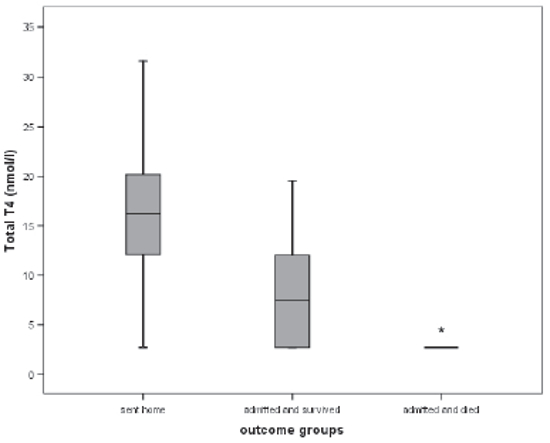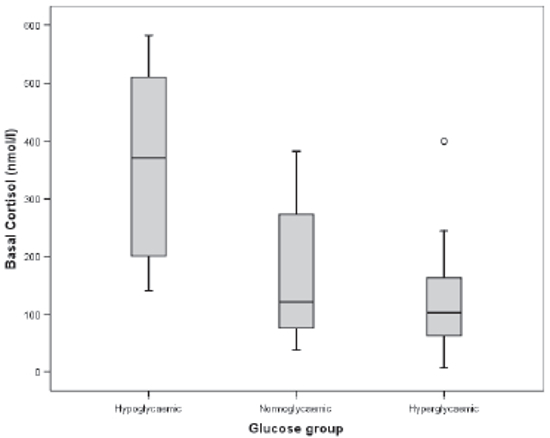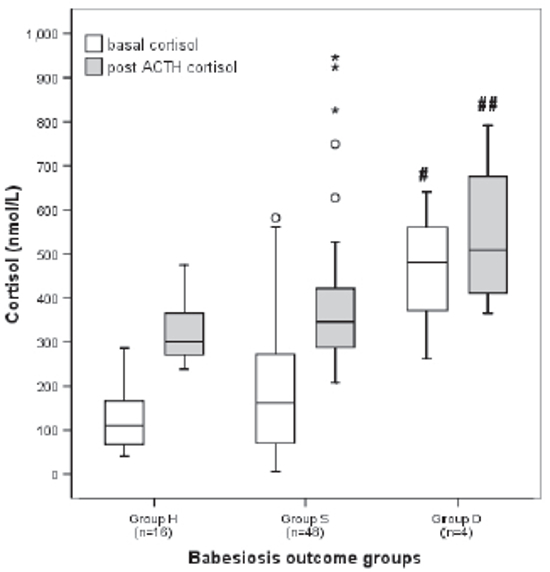Johan P. Schoeman, BVSc, MMedVet, PhD, DSAM, DECVIM-CA
Professor of Small Animal Internal Medicine, Head of the Department of Companion Animal Clinical Studies, Faculty of Veterinary Science, University of Pretoria, South Africa
The integration of endocrinology and critical illness generated important new insights into the complex and constantly changing endocrine environment accompanying severe illness. These studies, inter alia, uncovered endocrine biomarkers of severity, identified harbingers of incipient recovery and documented the effects of hormonal interventions. In addition, highly technological interventions in the natural dying process have unmasked previously unknown conditions, such as nonspecific wasting syndrome, hyperglycemia and insulin resistance, atrophy of intestinal mucosa and disturbed motility of the gastrointestinal tract, all of which contribute to the protracted dependency on intensive care support. Furthermore, various endocrine predictors of mortality have been studied in humans. Basal cortisol is well recognised for its positive correlation and thyroxine (TT4) for its negative correlation with mortality in human critical illness. Due to its close resemblance to human falciparum malaria, we decided to use canine babesiosis as a model to test some endocrine hypotheses.
Basal Hypothalamic-Hypophyseal-Adrenal and -Thyroidal Axes Changes
We undertook a prospective study to determine the serum ACTH, cortisol, TT4, fT4, and TSH concentrations of dogs with canine babesiosis at presentation; and observed the associated mortality.1 Ninety-five patients were studied. Dogs were retrospectively grouped into the following outcome groups: dogs that were admitted, but died (Group D); dogs that were admitted, but survived (Group S) and dogs that were not sick enough to be admitted, but instead were treated as outpatients and sent home (Group H).
Median serum cortisol concentrations were significantly higher in Group D compared to Group S (p < 0.001) and compared to Group H (p < 0.001), (Figure 1). Forty out of the 95 (42%) basal serum cortisol concentrations taken at admission were above the established reference range for dogs (i.e., above 160 nmol/l). Serum thyroxine concentrations were significantly lower in Group D compared to Group S (p = 0.014) and compared to Group H (p < 0.001), (Figure 2). In 67/95 cases (71%), the basal thyroxine concentrations taken at admission were below the established reference range for dogs (i.e., below 15 nmol/l).
| Figure 1. Box plots of the admission serum cortisol concentrations of the various outcome groupsin 95 dogs with B. rossi babesiosis; outliers are indicated by open circles and an asterisk. | 
|
|
| |
| Figure 2. Box plots of the admission serum total T4 concentrations of the various outcome groups in 95 dogs with B. rossi babesiosis | 
|
|
| |
This study demonstrated that mortality was associated with low basal serum TT4 and fT4 concentrations, as well as with high basal serum cortisol and ACTH concentrations, at the time of initial presentation. This study added important additional prognostic factors to the baseline admission dataset of patients with B. rossi infection. Other factors, such as high parasitaemia, compromised circulation, collapsed state, hypoglycaemia and hyperlactataemia have been described.2,3,4 There appears to be a very close association between illness severity (as indicated by high cortisol and low thyroxine and free thyroxine concentrations) and mortality, lending credence to the superior predictive capacity of basal cortisol and thyroid hormones in the B. rossi babesiosis model of canine critical illness. The results of this study are in stark contrast to other canine critical illness studies performed so far. This is most likely due to the fact that babesiosis caused by B. rossi is an acute, homogenous model of severe illness, in which outcome (in many cases) is beyond the control of clinicians. This would not necessarily apply to studies in which combinations of acute and chronically ill animals suffering from disparate illnesses were used.
The Response of the Pituitary-Adrenal and Pituitary-Thyroidal Axes to the Blood Glucose Perturbations in Canine Babesiosis
The blood glucose perturbations in virulent canine babesiosis have been highlighted and one study identified hypoglycaemia in 20% of canine babesiosis cases admitted to a veterinary hospital.2 Apart from its association with hyperlactataemia and poor outcome, little is known regarding the pathophysiology of hypoglycaemia in this disease. Only dogs that survived to hospital discharge were eligible for the study. Three patient groups were defined: hypoglycaemic dogs (plasma glucose < 3.3 mmol/l), normoglycaemic dogs (plasma glucose 3.3–5.5 mmol/l), hyperglycaemic dogs (plasma glucose > 5.5 mmol/l). Twelve dogs were recruited within each plasma glucose group.5
Median serum cortisol concentrations were significantly higher in the hypoglycaemic compared to the normoglycaemic (p < 0.01) and compared to hyperglycaemic dogs (p < 0.001). The serum cortisol concentrations were not significantly different between the normo- and hyperglycaemic dogs (p = 0.4), (Figure 3).
| Figure 3. Box plots of the admission basal serum cortisol concentrations of the three plasma glucose groups in 36 dogs with canine babesiosis | 
|
|
| |
This study found significantly higher basal and ACTH-stimulated serum cortisol concentrations in hypoglycaemic dogs. We initially postulated that adrenal failure (indicated by a low basal or post-ACTH serum cortisol) could be a plausible cause of hypoglycaemia in this acute haemoparasitic disease. This does not seem to be the case, because the pituitary-adrenal axis responded appropriately under conditions of hypoglycaemia. Our findings thus concur with most of the malaria studies, which showed increased cortisol secretion and no indication of adrenal failure.
ACTH Stimulation Test in Babesiosis
The adrenal response to critical illness and its role in prognostication has been an area of intense study in human medicine. There is general consensus on the positive association of high basal cortisol and adverse outcome in human and canine medicine. The association of serum ACTH-stimulated cortisol and delta cortisol concentrations with outcome is, however, in a state of equipoise. Various delta cortisol cut-off values and definitions for adrenal insufficiency abound. Sixty-eight dogs with canine babesiosis were studied.6 Fifteen healthy dogs were used as controls. Blood samples were obtained for the measurement of basal serum cortisol concentrations. Immediately thereafter, each dog was injected intravenously with 5 ug/kg of ACTH (tetracosactrin). A second blood sample was taken 1 hour later for serum ACTH-stimulated cortisol measurement, and delta cortisol was calculated. Three outcomes were defined: hospitalised dogs that died, Group D (n = 4), hospitalised dogs that survived, Group S (n = 48), and dogs sent home, Group H (n = 16).
Median basal cortisol was significantly higher in patients than in controls (156 vs. 83 nmol/l), whereas ACTH-stimulated cortisol (346 vs. 322 nmol/l) was similar. Median delta cortisol was therefore lower in patients (185 vs. 239 nmol/l). Median basal serum cortisol concentrations were significantly higher in Group D compared to Group S (p < 0.01) and compared to Group H (p < 0.001). Serum basal cortisol concentrations were not significantly different between Group S and group H (p = 0.1), (Figure 4). ACTH-stimulated cortisol was significantly higher in Group D (510 nmol/l), compared to group S (347 nmol/l) and compared to group H (301 nmol/l). Delta cortisol concentrations tended to be lower in dogs with higher basal cortisol concentrations, demonstrating a significant negative correlation (r = -0.516, p < 0.001).
| Figure 4 | 
Box plots of the basal serum cortisol and ACTH-stimulated cortisol concentrations of the three outcome groups in 68 dogs with canine babesiosis. # = significantly (p < 0.05) higher than the median basal cortisol of the other two groups; ## = significantly (p < 0.01) higher than the median ACTH-stimulated cortisol of the other two groups. |
|
| |
The results of this study demonstrated significantly higher serum basal-, but lower delta cortisol concentrations in dogs with canine babesiosis compared to control dogs. Serum ACTH-stimulated cortisol concentrations were, however, very similar between the babesiosis and control groups. Adrenocortical function (as indicated by basal and ACTH-stimulated cortisol concentrations as well as cortisol to ACTH ratios) was up-regulated in this model of canine critical illness. Median basal and ACTH-stimulated cortisol concentrations as well as cortisol to ACTH ratios were the lowest in group H dogs (110 nmol/l, 301 nmol/l and 44, respectively), higher in Group S dogs (161 nmol/l, 347 nmol/l and 49, respectively) and the highest in the sickest dogs belonging to group D that died (481 nmol/l, 510 mol/l and 90, respectively). Elevated ACTH-stimulated cortisol concentrations were positively associated with disease severity and mortality. In this subgroup of 68 cases, ACTH-stimulated serum cortisol showed the same association with mortality that serum basal cortisol concentrations showed in the former larger babesiosis study.1
In conclusion, the results indicate that the cortisol-to-ACTH ratio (which assesses the whole pituitary-adrenal axis), demonstrates up regulation of adrenocortical function in acute canine critical illness, in contrast to the delta cortisol parameter that tends to show the reverse. Furthermore, we would argue that testing only the adrenocortical component of the axis, especially in situations of high baseline cortisol concentrations, could lead to erroneous inferences and the gratuitous use of corticosteroid supplementation. In addition, the cortisol-to-ACTH ratio has the advantage of being determined on a single blood sample.
References
1. Schoeman JP, Rees P, Herrtage ME. Endocrine predictors of mortality in canine babesiosis caused by B. canis rossi. Vet Parasitol. 2007;148:75–82.
2. Keller N, Jacobson LS, Nel M, de Clerq M, Thompson PN, Schoeman JP. Prevalence and risk factors of hypoglycemia in virulent canine babesiosis. J Vet Intern Med. 2004;18:265–270.
3. Nel M, Lobetti RG, Keller N, Thompson PN. Prognostic value of blood lactate, blood glucose, and hematocrit in canine babesiosis. J Vet Intern Med. 2004;18:471–474.
4. Böhm M, Leisewitz AL, Thompson PN, Schoeman JP. Capillary and venous Babesia rossi parasitaemias and their association with outcome of infection and circulatory compromise. Vet Parasitol. 2007;141:18–29.
5. Schoeman JP, Herrtage ME. The response of the pituitary-adrenal and pituitary-thyroidal axes to the blood glucose perturbations in canine babesiosis. J S Afr Vet Assoc. 2007;78:215–220.
6. Schoeman JP, Herrtage ME. Adrenal response to the low dose ACTH stimulation test and the cortisol-to-adrenocorticotrophic hormone ratio in canine babesiosis. Vet Parasitol. 2008;154:205–213.